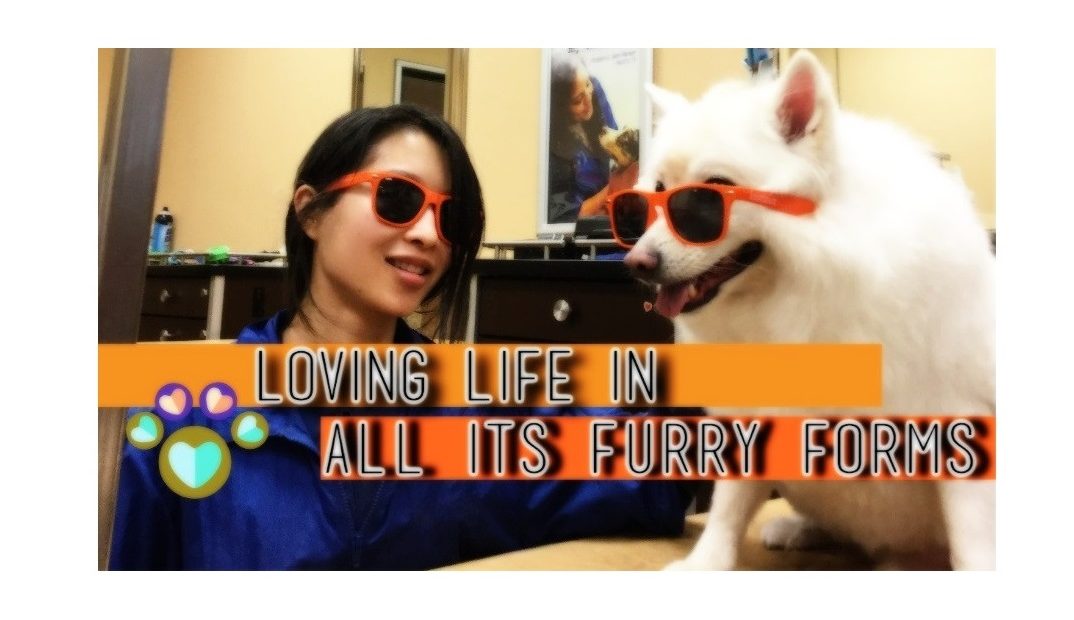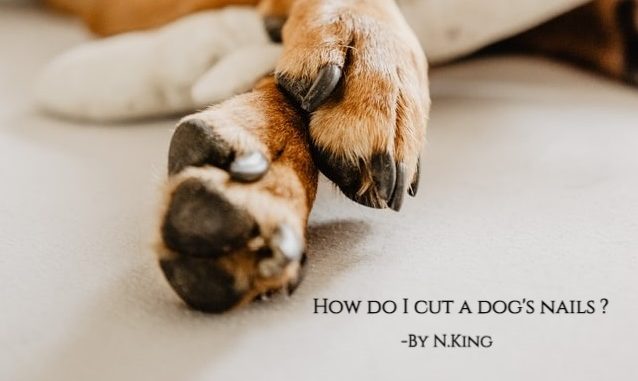
Walks, toys and butt massages are some of a dog’s favorite treats. On the other hand, nail trims may scare many dogs. This is why it’s important to ensure your dog has an overall positive nail trimming experience. Therefore, there are a few tips to keep in mind to reduce fear and build a better bond with your pet. With this step by step guide, you will learn how to cut a dog’s nails.
Learning how to cut a dog’s nails:
STEP 1: Have treats ready:
As a professional groomer, I always keep treats on hand to reward a dog after a nail trim. Accordingly, the dog learns to associate the nail trim with a positive reward. You can also reward a scared dog with a treat after trimming each nail.

STEP 2: Proper restraint:
To ensure the safety of the dog and yourself, it is best to have someone help restrain the dog. Restraining the dog in the standing position is the most common restraint method. In this method, the restrainer wraps one arm snugly under the dog’s neck and the other arm tucked under its abdomen. From here, the dog’s body is pulled against the restrainer’s body for added support and control. This controls the head and body from sudden movement.
If a dog turns aggressive, use an Elizabethan Collar or Muzzle.
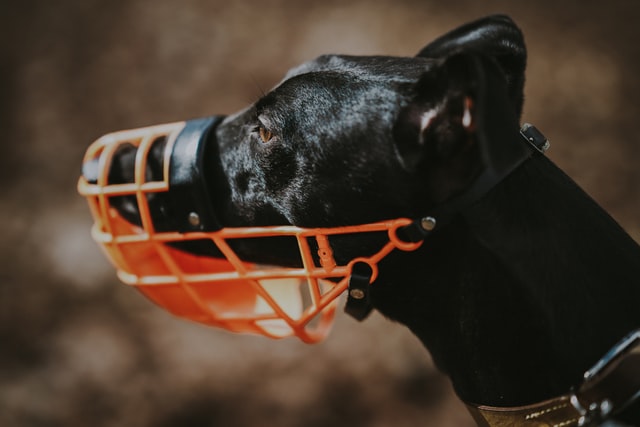
STEP 3: Appropriate nail clippers:
There are many kinds of nail clippers available. However, no matter what kind of nail clippers you buy – make sure it is the appropriate size for your dog. In addition, make sure the nail clippers are purchased for the right species.
CAUTION: Nail clippers for cats , birds and guinea pigs are not appropriate for dogs. These nail clippers will not be sharp enough.
There are three kinds of nail clippers: Nail scissors, plier style nail trimmers and guillotine type of trimmers.
As a professional groomer, I personally recommend the nail scissors. These look like scissors and most people feel comfortable handling them. Furthermore, you also have a clear view of how much of the nail feeds through the blades.
The plier style nail trimmers are my second choice. However, I am not a fan of the safety guard. Though the safety guard prevents cutting too deeply, I find it blocks my view of how much of the nail has entered the safety guard. The safety guard is not always an accurate way of safely measuring how much of the nail to cut.
My least favorite nail trimmers are the guillotine types of trimmers. These kind of nail clippers have slot where the tip of the nail fits into. When the handles are then squeezed together, a sliding blade trims the nail. Personally, I find it very awkward to use.
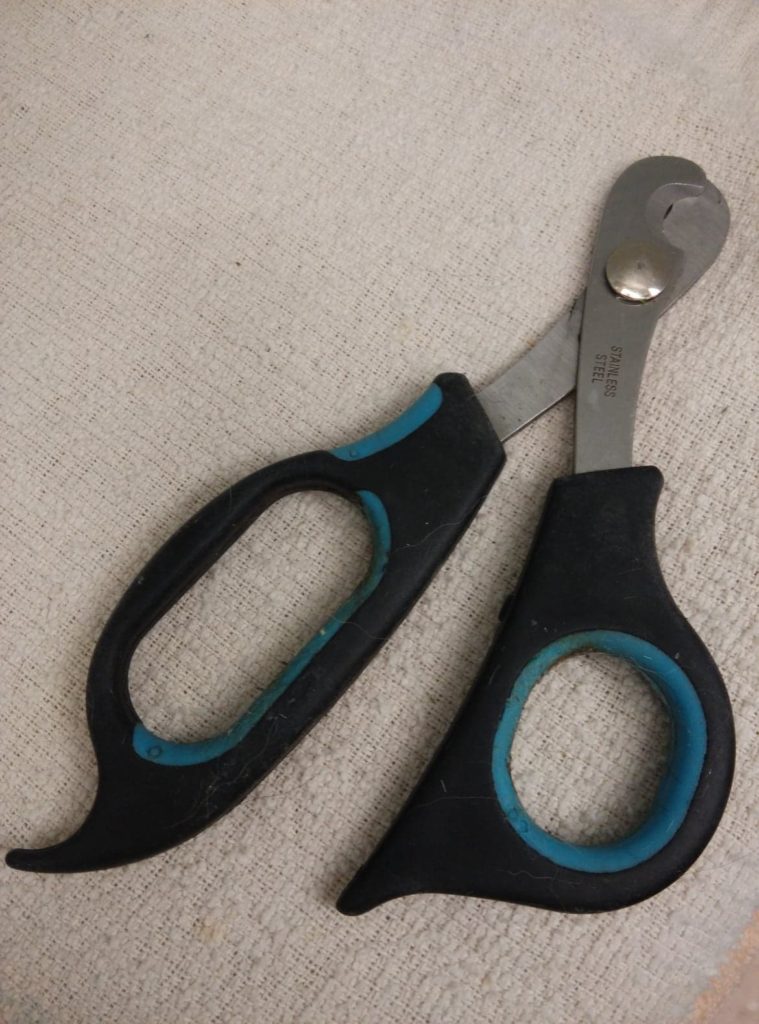
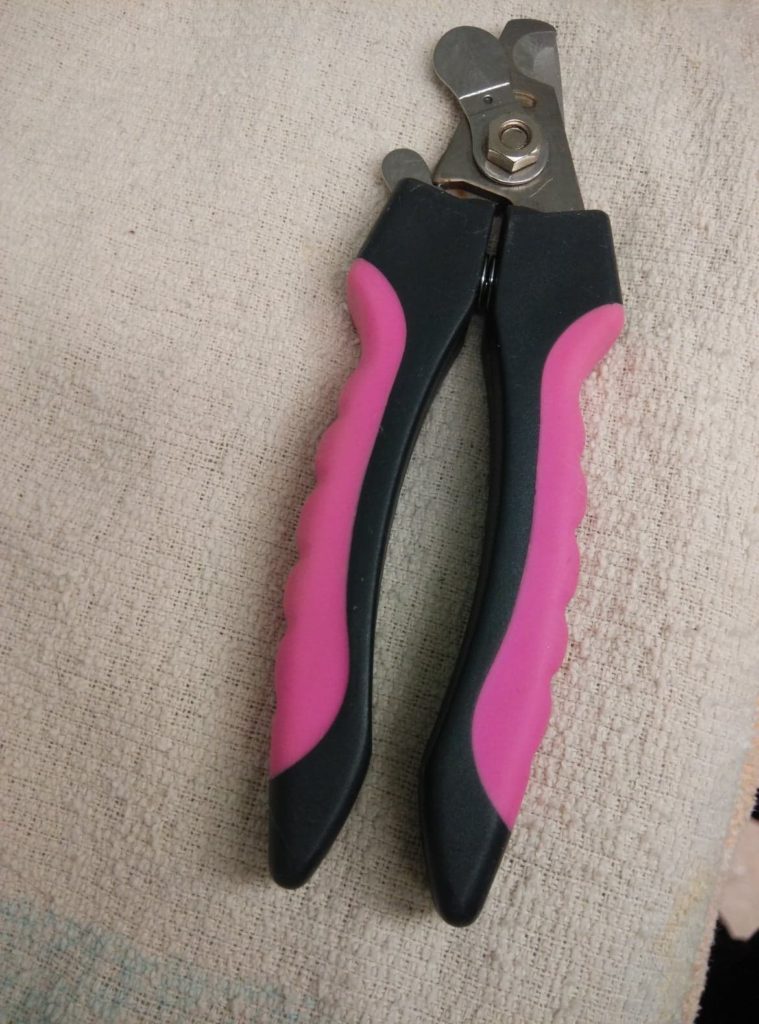
When learning how to cut a dog’s nails – make sure to buy the right sized nail clippers.
STEP 4: Identify the quick
The quick is the pink bundle inside the nail that contains the blood supply and nerves. Pain and bleeding of the nail can result from cutting too deeply. Therefore, it is important to avoid cutting too much of the nail.
If your dog has white or clear nails, the quick is often seen as a pinkish stripe inside the nail.
PRO TIP: f a dog has black nails, first try and look for at a clear or white nail. Some dogs have a mix of clear and dark nails. If at least one nail is clear, find the quick and use this as an estimate of how much of the nail can be cut.
However, if all the dog’s nails are dark or black, then it’s best to trim small sections of the nail at a time. This allows you to assess how much more to trim as you cut further.
As an example, the photo below illustrates the appearance of the quick. Identifying the quick, gives an idea of how much of the excess nail to cut.
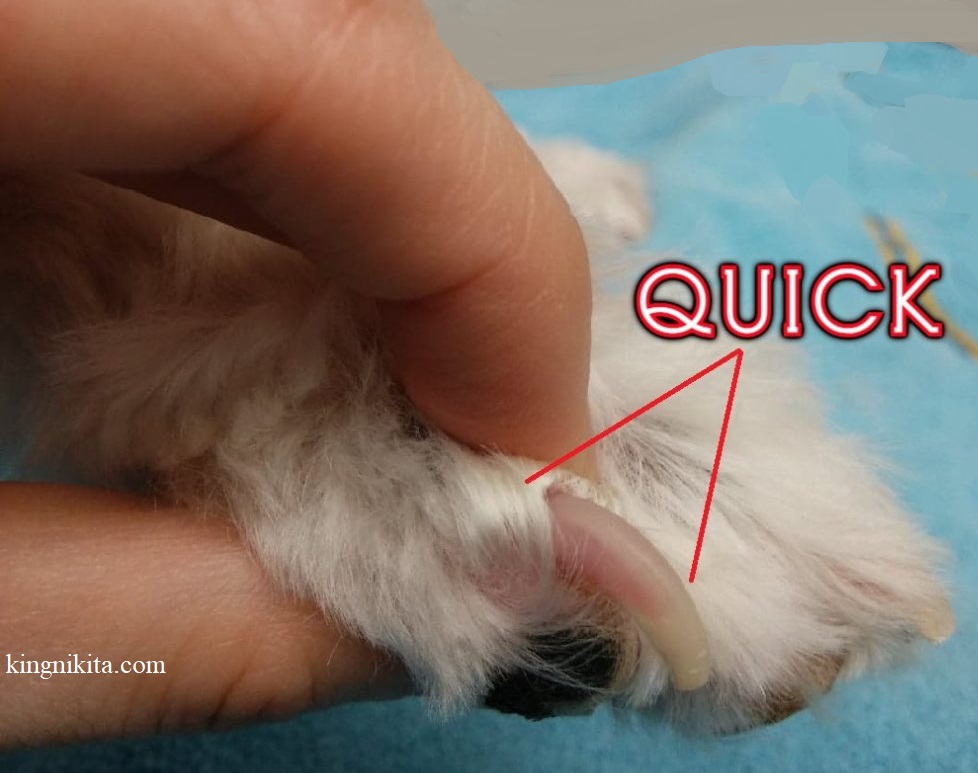
If you have trouble identifying the quick of the nail, have your vet or groomer help you.
STEP 5: Lift the paw
Place your left hand over the dog’s paw and flip it back such that the paw pad faces upwards from your left palm. From this position, you have a clear view of the nail tips. Generally, the curve of the nail that grows past the paw pad can be cut.
PRO TIP: When nails are properly cut, the nails should not be touching the ground.
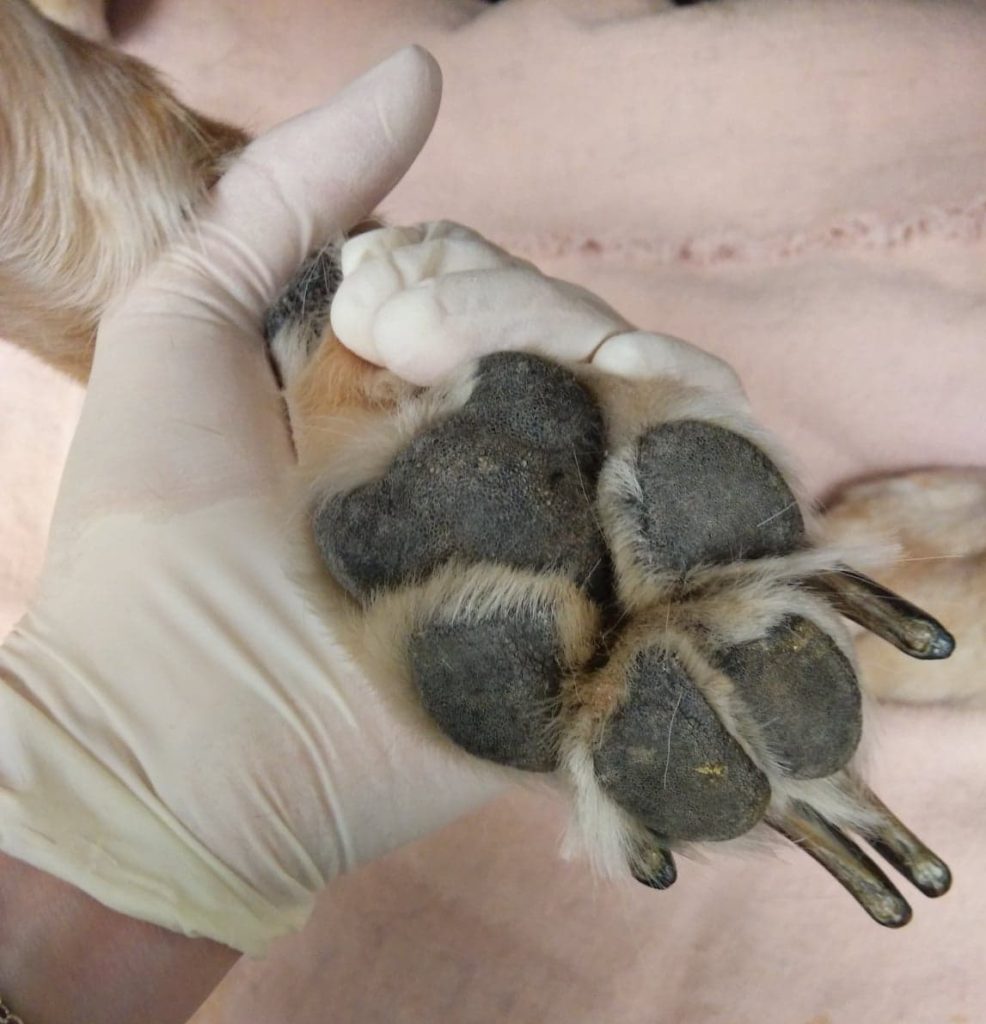
STEP 6: Position the nail clippers
With the dog’s paw pad facing upward from your left palm, make sure the paw is well secured. The dog should not be able to pull its paw away from your grip. Then use your right hand to grip the nail clippers. After that, position the nail clippers at a 45 degree angle below the quick and trim a small section.
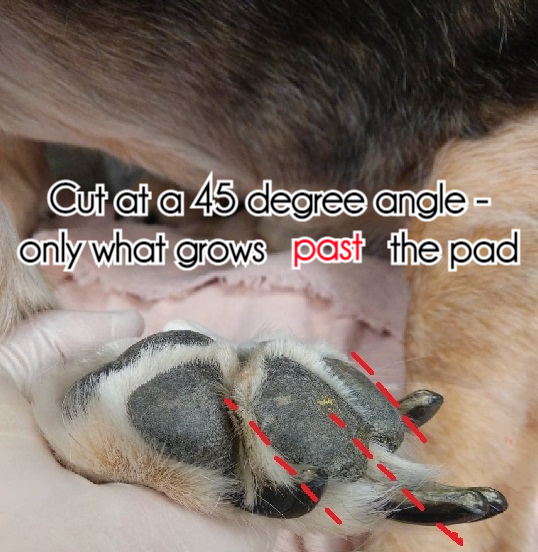
STEP 7: Observe the nail tips
After cutting a section of the nail, observe the tip of the nail. If the end of the trimmed nail is a chalky white, more of the nail can be cut.
Always observe the tip of the nail to determine how much more to cut.
STEP 8: Continue to cut more if appropriate:
The chalky white color is excess nail that extends beyond the blood supply and nerve endings. In this case, another small section of the nail can be cut.
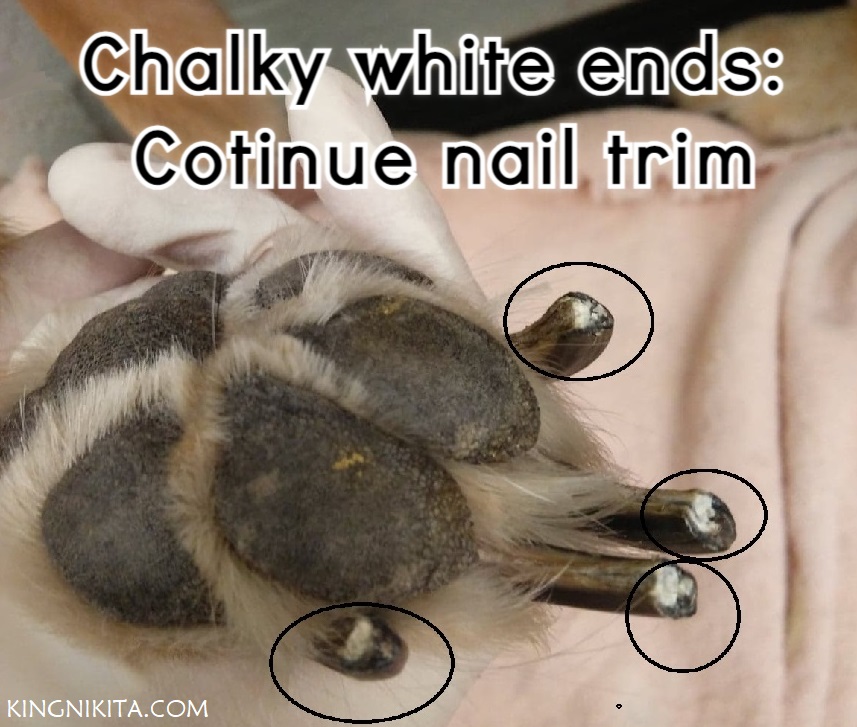
STEP 9: Observe the nail tips:
After cutting another section of the nail , observe the end of the nail. As more of the nail is cut, a pink or black oval appears in the center of the nail. In other words, this signals that the quick is near. However, if the oval is small, more of the nail can be trimmed.
As an example, the photo below illustrates freshly trimmed dog nails with a small dark center.

STEP 10: Stop cutting at the end of the quick
If there is a big bigger pink or black oval that takes up 3/4 of the nail center – this marks the end of the quick. Therefore, at this point, you should stop cutting.
CAUTION: A cut beyond this point will cause the nail to bleed. This is also very painful.
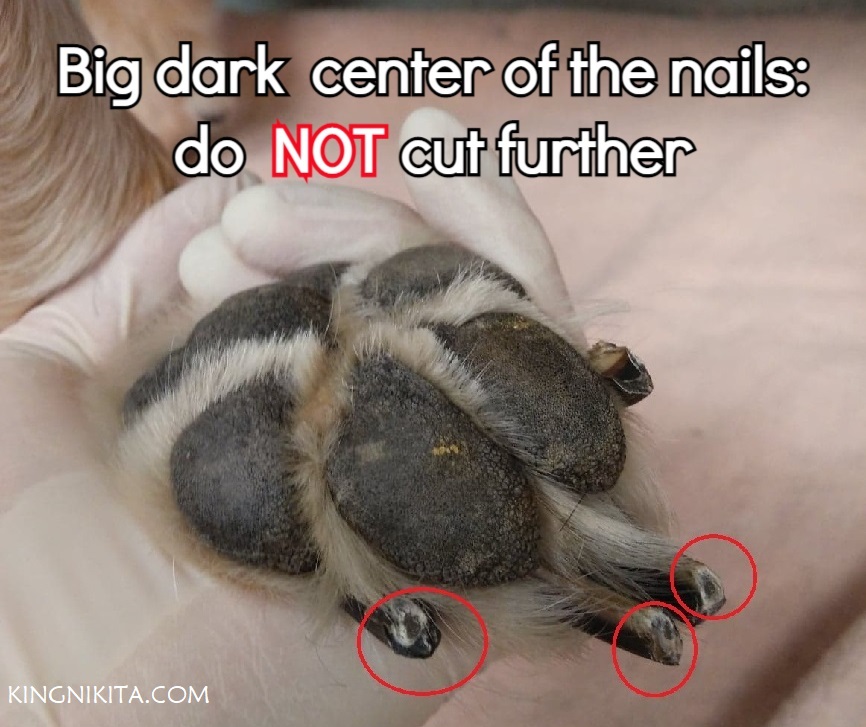
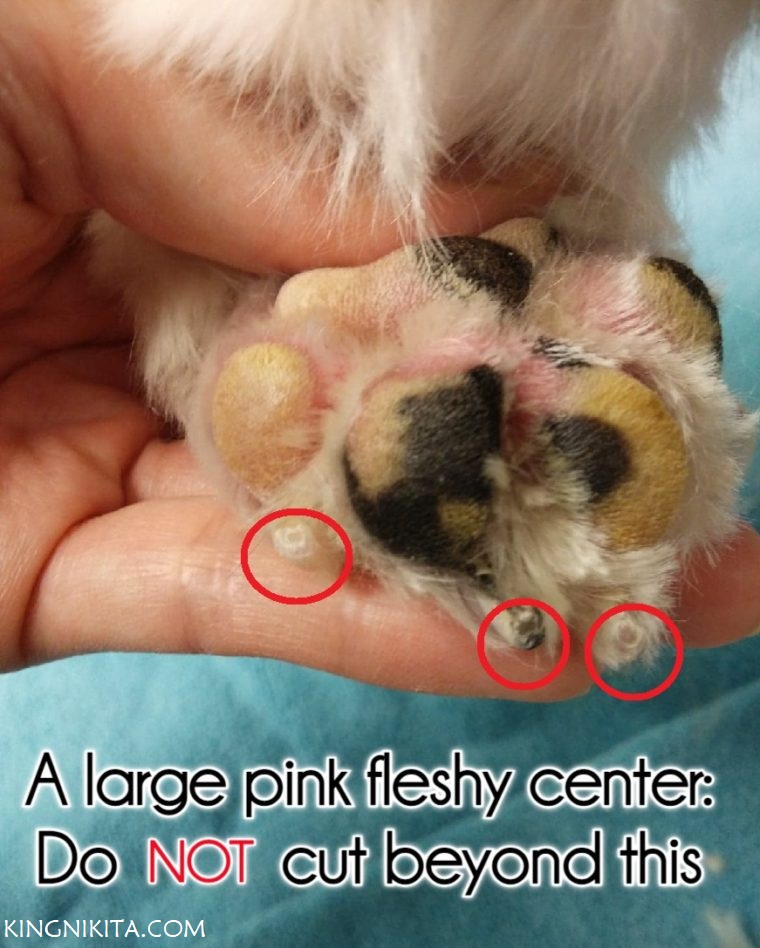
Sometimes, the nail bleeds. Do not panic if this happens.
STEP 11: Control any bleeding
If the nails bleed, the application of a clotting powder such as styptic powder is used to control bleeding. In addition, silver nitrate sticks can also be used to stop and control the bleeding.
PRO TIP: Silver nitrate sticks work faster than styptic powder and are very easy to use. For example, rotating the silver end of the stick against the bleeding nail will help clot the blood.
Other alternatives include using corn starch, baking soda or flour. These powders can be pressed into the injured nail until bleeding stops.
If bleeding continues – consult a vet for assistance. In such cases, the vet may need to cauterize the wound.
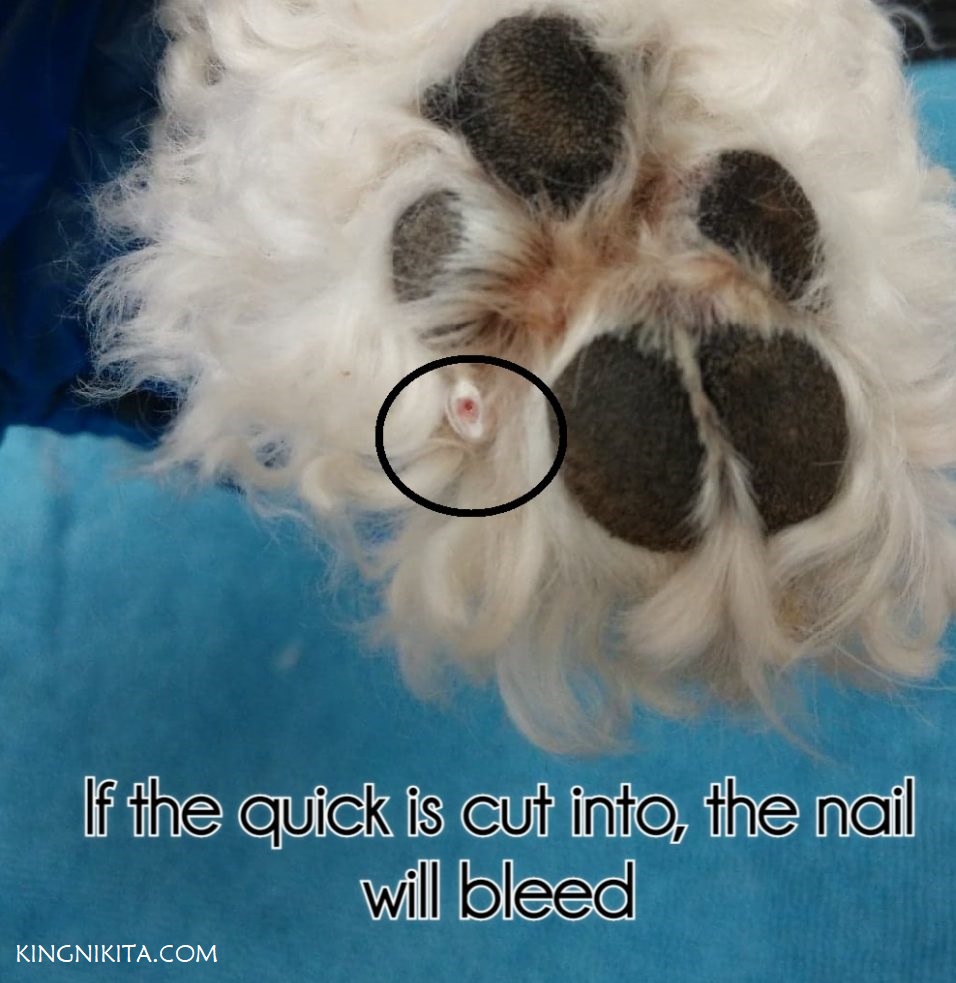
STEP 12: Reward with a treat:
After the nail trim, reward your dog with a treat and lots of praise. This sooths the anxiety of scared dogs. Above all, a positive nail trim experiences makes future nail trims easier.
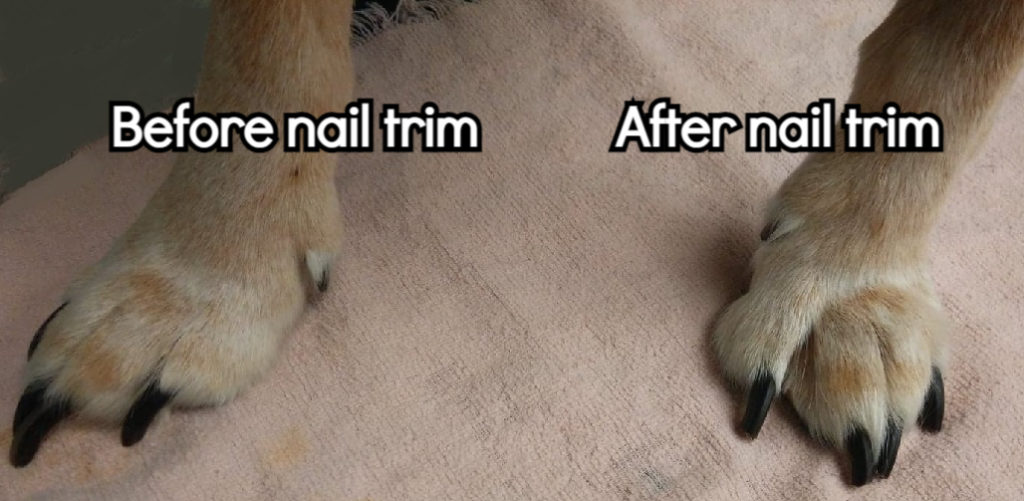
– By Nikita King, Certified Pet Groomer
